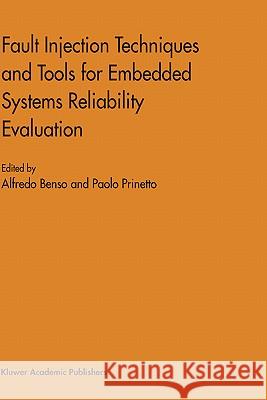Fault Injection Techniques and Tools for Embedded Systems Reliability Evaluation » książka
Fault Injection Techniques and Tools for Embedded Systems Reliability Evaluation
ISBN-13: 9781402075896 / Angielski / Twarda / 2003 / 241 str.
Fault Injection Techniques and Tools for Embedded Systems Reliability Evaluation
ISBN-13: 9781402075896 / Angielski / Twarda / 2003 / 241 str.
(netto: 576,41 VAT: 5%)
Najniższa cena z 30 dni: 578,30 zł
ok. 22 dni roboczych
Bez gwarancji dostawy przed świętami
Darmowa dostawa!
Our society is faced with an increasing dependence on computing systems, not only in high tech consumer applications but also in areas (e.g., air and railway traffic control, nuclear plant control, aircraft and car control) where a failure can be critical for the safety of human beings. Unfortunately, it is accepted that large digital systems cannot be fault-free. Some faults may be attributed to inaccuracy during the development, while others can come from external causes such as environmental stress. Radiations, electromagnetic interference and power glitches are some of the most common causes of transient faults.
As a consequence, the past years have seen a growing interest in methods for studying the behaviour of computer-based systems when faults occur, and several approaches have been proposed to evaluate the dependability properties of a computer-based system.
Fault Injection, i.e., the artificial injection of faults into a computer system in order to study its behaviour, emerged as a viable solution, and has been deeply investigated by both academia and industry. Different techniques have been proposed and some of them practically experimented.
Fault Injection Techniques and Tools for Embedded Systems Reliability Evaluation intends to be a comprehensive guide to Fault Injection techniques used to evaluate the dependability of a digital system. The description and the critical analysis of different Fault Injection techniques and tools will be authored by key scientists in the field of system dependability and fault tolerance.











